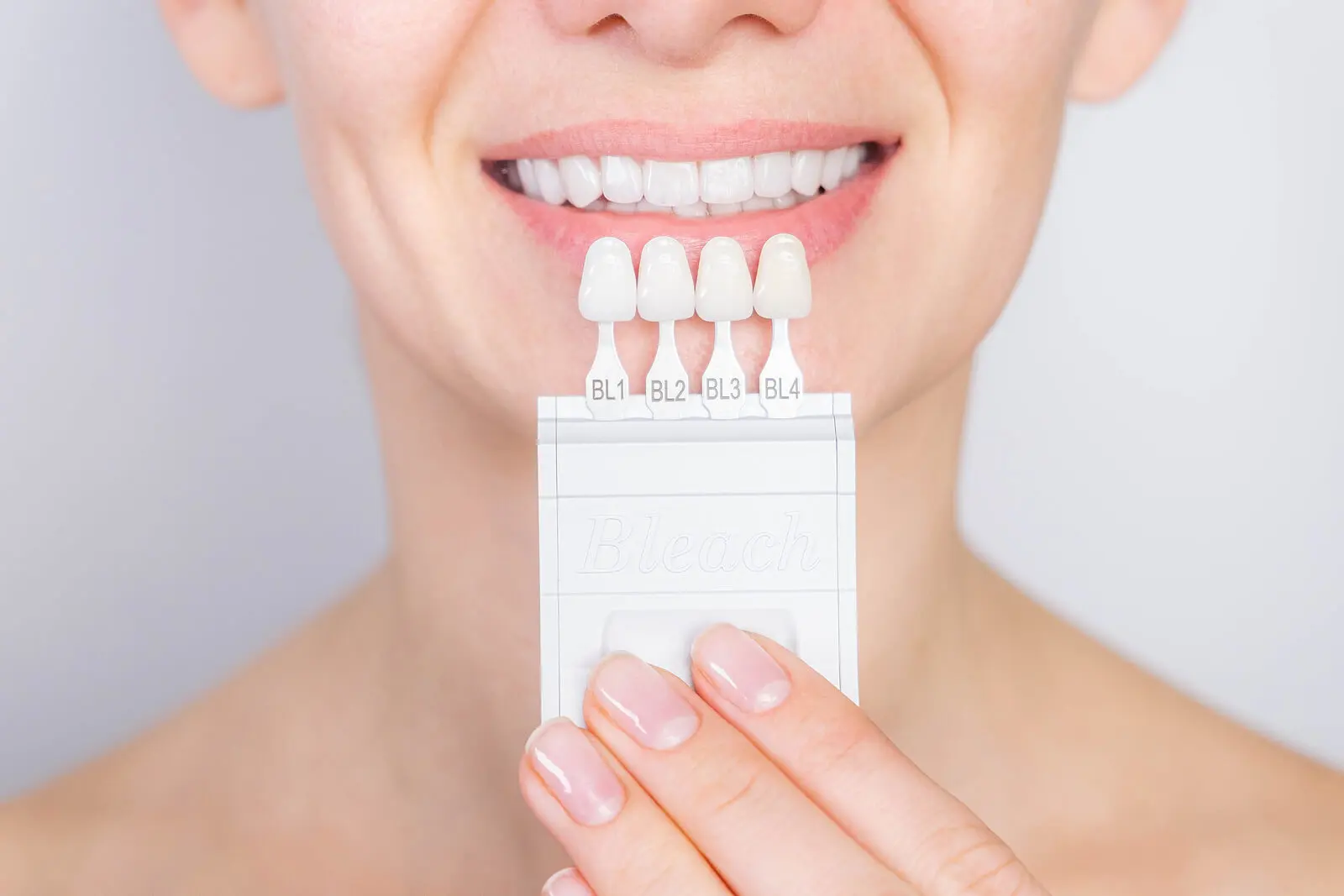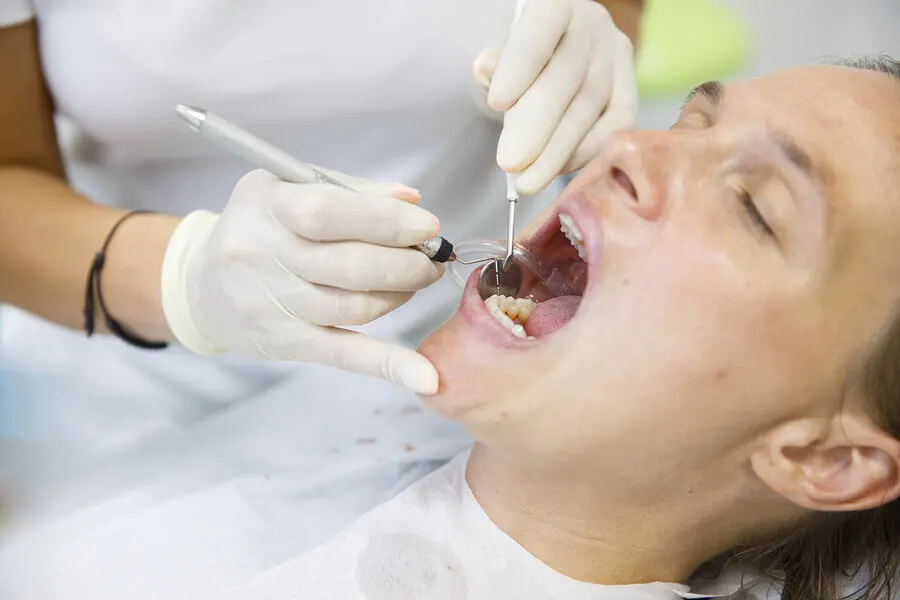Acid Etching: What Is this Dental Procedure?


Written and verified by the dentist Vanesa Evangelina Buffa
Acid etching is a necessary dental procedure when you need to prepare teeth for the application of an adhesive. It’s a fundamental step when bonding any dental material to tooth surfaces.
A crown, veneer, bridge, inlay, or filling requires the use of adhesive systems that allow the bonding of the materials to the tooth tissues. For this connection to be made effectively, it’s necessary to prepare the teeth, and acid etching is part of this process.
What is acid etching?
Acid etching is a procedure used in dentistry when carrying out procedures that require adhesives. It’s a step prior to using dental bonding materials on a tooth.
When repairing a damaged tooth, one of the biggest challenges is for the filling material to bond firmly to the tooth structure. Moisture in the mouth, chewing forces, and changes in pH and temperature are obstacles that must be overcome in order for the filling to remain in the tooth and restore its functionality.
Acid etching plays a key role in this process of adhering dental materials to the dental tissues. Subjecting the dental structures to these products makes it possible to obtain more porous surfaces to facilitate adhesion.
Depending on the dental surface to be etched, two types of etching acids can be used:
- Phosphoric acid: This is the most popular material in the acid etching technique, since it can be used on both enamel and dentin. It’s able to provide both tissues with an optimal surface for bonding.
- Hydrofluoric acid: This is used for etching glass and ceramics, improving their adhesion and mechanical strength.
There are also other types of acids used for dentin conditioning, such as polyacrylic acid and etchants without rinsing. In general, these products consist of a colored gel to make it visible. They’re marketed in pre-filled syringes that facilitate their handling in the clinic.
Read more: Dental Cement: All its Types and Uses
What does acid etching do to the tooth?
In the same way that we sand a piece of furniture before painting it, acid etching prepares the dental tissues so that the bonding system can work better. By applying acidic substances to the tooth structures, these become more porous, thus increasing the retention of the materials to be used.
At the microscopic level, acid etching carries out a controlled erosion of the tooth surfaces. The product dissolves some of the minerals in the enamel and dentin, creating microporosities.
These small irregularities in the tooth surface allow adhesive systems and filling materials to be better received. As the products enter these small pores, the bonding surface increases and the repair is made stable.

Acid etching techniques
Depending on the type of repair to be made, the material, and the extent of the lesion, the dentist will choose the correct type of acid. In addition, the following three basic etching techniques are available for the procedure.
1. Total etching
The total acid etching technique is an intervention that’s performed on both enamel and dentin. The same product is used on both tissues, covering a large part of the cavity to be filled.
This technique is used in cavities that require a lot of filling and where adhesion could be a problem. When the preparation of the tooth isn’t deep or close to the pulp, total acid etching is the most efficient procedure.
When the acid is placed on the enamel, the etching pattern creates micromechanical retentions. In dentin, because it has a tubular structure and a mostly organic composition, the effect is to expose its collagen matrix so that the hydrophilic monomers of the adhesive material are able to penetrate it.
When performing this technique it’s important to remember that the etching time of dentin is shorter than that of enamel: only 15 seconds. In addition, it’s important not to dry its surface and to preserve some of its humidity, so drying with pressurized air is only 5 seconds.
A 30% or 40% orthophosphoric acid gel is used for this technique, which prepares both enamel and dentin for adhesive procedures. It has the advantage of achieving high bond strength and of not interfering with the polymerization of dual-curing resins, so its use is quite universal.
2. Selective etching
This type of dental etching consists of the application of phosphoric acid only on the enamel surface. In this case, care is taken that the product doesn’t reach the dentin area.
It’s useful for patients who have a tendency to suffer sensitivity in the deepest areas of their teeth. With this type of procedure, these later discomforts can be prevented.
3. Self-etching
Some adhesive systems include the etchant in their composition. In this way, with a single product and a single application, etching and bonding of the tooth is carried out.
The liquid is applied to the enamel and dentin without having previously etched them. It’s important to follow the manufacturer’s recommendations.
This technique is very effective for repairs that are already retentive and where the repair element isn’t at risk of coming out. In addition, this type of product has the great advantage of preventing postoperative sensitivity.
On the other hand, given the ease and speed of placement, it’s a system that’s becoming increasingly popular in dentistry.
Characteristics of etching acids
All dentists will have different products, brands, presentations, and concentrations. It will always be the dentist who chooses the one that best suits each particular case.
However, when choosing between one or another, the dentist will take into account multiple characteristics that clarify and define the choice. We’ll tell you about them now:
- Types of acid: Phosphoric acid will be chosen if enamel or dentin is to be etched. Hydrofluoric acid is used to prepare materials such as porcelain.
- Concentration: The percentage of product varies whether it’s phosphoric or hydrofluoric acid. In the first case, the concentrations available on the market vary between 30% and 40%, with 37% being the most common. Hydrofluoric acid is used in concentrations of 5% or 10%.
- Presentation: The most common presentation of etching acids are pre-filled syringes that come in various sizes, from 1.2 ml to 50 ml. They can also be found in 5 ml or 15 ml bottles. They’re usually accompanied by application tips for easy handling.
- The viscosity of the solution: The consistency of the product must facilitate its application, allow great precision, and be able to remain in the place where it has been deposited. Thus, in general, they’re in the form of a thixotropic gel, i.e., able to flow when applied, but viscous, meaning it won’t run off the tooth surfaces.
- Liquid/Gel: Etching acids can be in liquid or gel form, the latter being the most common. In both cases, they can come in syringes or in bottles.
- Color: In order to be able to tell the product apart from the tooth surface, acids are colored. They’re either green, purple, yellow, or blue.
- Application, rinsing, and drying time: The application, rinsing, and drying time varies if the product is applied on the enamel or on the dentin. In addition, each manufacturer indicates the specific number of seconds needed for its own product, so it’s essential to follow the recommendations of each brand.
Acids with exceptional characteristics
Advances in the field of dentistry make it possible to find increasingly practical and successful materials. Thus, these days it’s possible to find new products with new properties.
One of the new capabilities that some cutting-edge adhesive systems have achieved is the possibility of being self-limiting. This means that the product decalcifies the dentin to a certain depth and then stops working. This prevents the risk of excess tissue wear and complications such as sensitivity.
Compatibility with all filling materials is another new feature that several etching systems are seeking to achieve. In this way, the dentist will be able to use a single product for all types of restorations.

How is acid etching performed?
The method for acid etching a tooth depends on the technique to be used and the recommendations of the product manufacturer. Thus, the time required for each step varies from one brand to another.
The procedure is very simple and fast; it usually takes no more than 1 minute. Although there are variations depending on the technique and the brand, in general, these are the steps:
- Prepare the tooth: The tooth should already be free of decay and ready to be repaired.
- Apply the product to the tooth: The acid is applied with the dispenser that comes with the product, covering the areas to be etched. It’s left to act for the time stipulated by the manufacturer and according to the type of tissue. It shouldn’t be more than 60 seconds.
- Rinse: Remove the material, applying a jet of water on the tooth surface until there’s no residue.
- Drying: The area is slightly dried, allowing some moisture to remain in the dentin.
In this way, the tooth surfaces are etched and ready to receive the adhesive system of choice, prior to carrying out the repair.
Risks of acid etching
Although it’s true that this procedure increases the fixation of necessary elements to the tooth, it can also cause some complications, such as postoperative sensitivity. Some treated teeth may be sensitive to cold or heat for a few days or even weeks, depending on the extent of the repair.
However, with adequate isolation, respecting etching times, and using a desensitizing agent in the preparation, the risk of sensitivity decreases.
Find out more: Teeth Whitening Procedures; Description and Types
A procedure to give you your smile back
Acid etching creates microporosities and opens the dentinal tubules of the tooth surfaces. This, in combination with adhesive systems, improves the bonding and retention of filling materials and elements. With this procedure, damaged teeth can be repaired and functional and beautiful finishes can be achieved.
All cited sources were thoroughly reviewed by our team to ensure their quality, reliability, currency, and validity. The bibliography of this article was considered reliable and of academic or scientific accuracy.
- Galdames, B., Brunoto, M., Marcus, N., Grandon, F., & Priotto, E. (2018). diferentes Protocolos de grabado Ácido en dentina; estudio Micromorfológico. Revista clínica de periodoncia, implantología y rehabilitación oral, 11(2), 91-97.
- Bader Mattar, M., & Ibáñez Musalem, M. (2014). Evaluación de la interfase adhesiva obtenida en restauraciones de resina compuesta realizadas con un sistema adhesivo universal utilizado con y sin grabado ácido previo. Revista clínica de periodoncia, implantología y rehabilitación oral, 7(3), 115-122.
- Almaguer, C. O., Torres, M. E. R., Noyola, V. G., & Cortés, P. M. (2018). Factores que perjudican el proceso de adhesión. Revista Mexicana de Estomatología, 5(1), 30-31.
- Perero Pozo, C. J. (2020). Protocolos de grabado ácido en dentina (Bachelor’s thesis, Universidad de Guayaquil. Facultad Piloto de Odontología).
- George Freedman, D. D. S. Sistemas adhesivos dentales. 7 generaciones de evolución.
- Mandri, M. N., Aguirre Grabre de Prieto, A., & Zamudio, M. E. (2015). Sistemas adhesivos en odontología restauradora. Odontoestomatología, 17(26), 50-56.
- Mejía, J. C., & Sepúlveda, S. (2020). Análisis del grado de sensibilidad dentinaria postoperatoria con la técnica de grabado ácido en pacientes que acuden al área de operatoria dental de la clínica odontológica Dr. René Puig Bentz de la Universidad Nacional Pedro Henríquez Ureña, periodo Septiembre-diciembre 2019 (Doctoral dissertation, Universidad Nacional Pedro Henríquez Ureña).
- Cevallos Zamora, K. E. (2020). Adhesivos universales en odontología (Bachelor’s thesis, Universidad de Guayaquil. Facultad Piloto de Odontología).
This text is provided for informational purposes only and does not replace consultation with a professional. If in doubt, consult your specialist.








